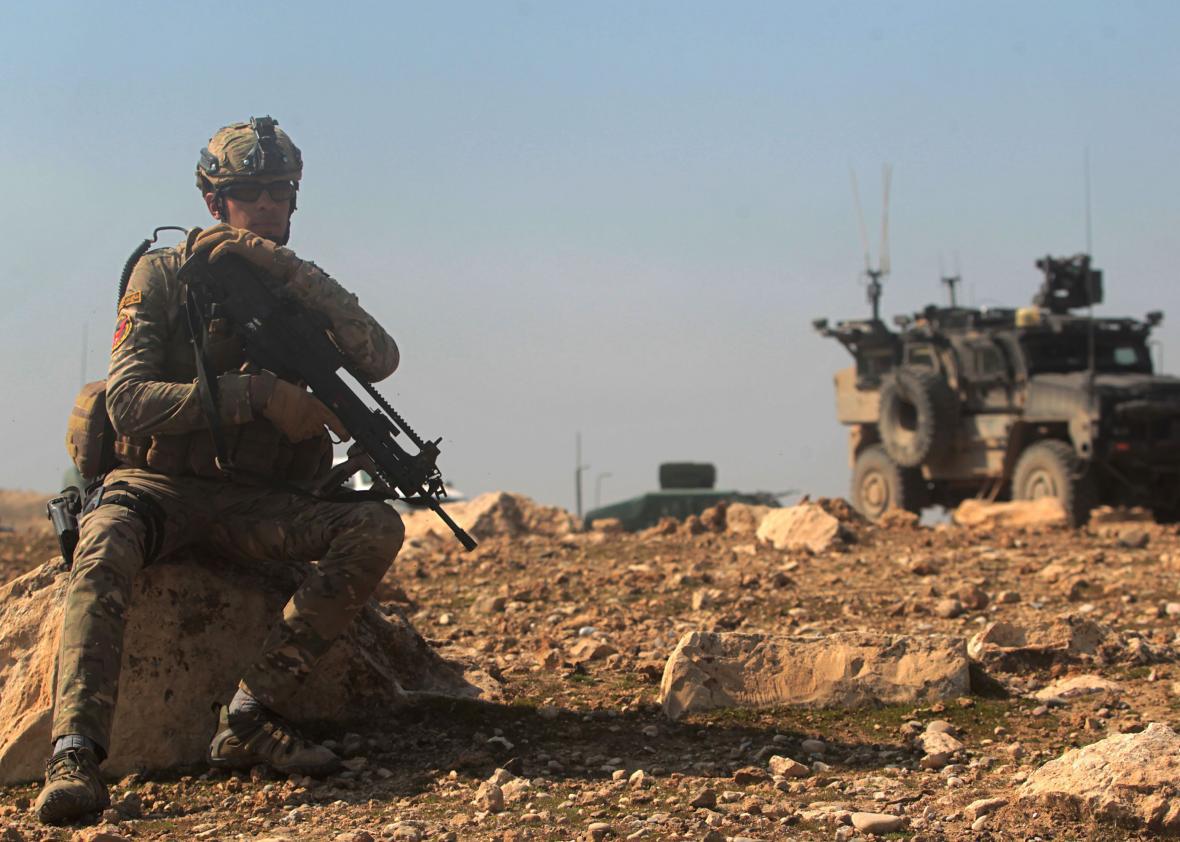Over the past couple of weeks, we’ve started to get a good look at the Trump administration’s strategy to fight ISIS and other Jihadi groups in Syria, and the consensus seems to be that it’s not a new strategy at all.
“Trump’s Pentagon Presents ISIS Plan That Looks Much Like Obama’s,” reported NBC. “Trump’s secret plan against ISIS? A lot like Obama’s,” was CNN’s take. “Trump’s ISIS Plan, as Described by Tillerson, Sounds Like Obama’s,” reported the New York Times.
I completely understand the thinking behind these headlines. Since he first began his campaign for president, Trump claimed to have a plan for “defeating ISIS quickly and effectively and having total victory” that he did not want to reveal to the enemy, so as to maintain the element of surprise. He also claimed to know more about ISIS “than the generals do.” But since taking office, he has not only hired generals for virtually every major national security position in his administration, he’s given them carte blanche to design an anti-ISIS plan that, as the headlines above indicate, looks an awful lot like the one that’s been in place for years now and that Trump derided as a failure on the campaign trail.
As NBC puts it, this involves “calls for continued bombing; beefing up support and assistance to local forces to retake its Iraqi stronghold Mosul and ultimately the ISIS capital of Raqqa in Syria; drying up ISIS’s sources of income; and stabilizing the areas retaken from ISIS.” Or as retired Adm. James Stavridis put it, “The current plan to defeat the Islamic State is just like that old saying: Plan B is just, ‘Try harder at Plan A.”
But while it’s now abundantly clear that Trump did not know more than the generals or have a secret plan to defeat ISIS, it’s a mistake to suggest that nothing has changed. Doing so risks brushing aside some of the more disturbing aspects of the Trump approach.
Trump has instructed the Pentagon to loosen the rules of engagement for airstrikes to the minimum required by international law, eliminated White House oversight procedures meant to protect civilians, and ordered the CIA to resume covert targeted killing missions. Since then, there have been a number of mass casualty events, including an alleged strike on a mosque in Aleppo that locals say killed nearly 50 civilians; a strike on a school near Raqqa that reportedly killed at least 30, many of them displaced people taking shelter; and strikes in Mosul that may have killed as many as 200 civilians in recent days. This weekend, the U.S. officially acknowledged a strike on Mosul that may have killed more than 100 people, most of them presumed to be civilians, which would be the greatest loss of civilian life in one incident since the beginning of the U.S. campaign against ISIS.
The number of reported civilian fatalities from U.S. coalition airstrikes has jumped to 1,058 in March from 465 in December according to the monitoring site Airwars. While it’s impossible to say that any one of these strikes would not have been ordered under Obama, the new directives should cause us to give the military and administration less of the benefit of the doubt. The New York Times last Friday cited an Iraqi special forces officer in Mosul as saying that there has been a “noticeable relaxing of the coalition’s rules of engagement since President Trump took office.”
He may not know more than the generals do about ISIS, but Trump does appear to be fulfilling his campaign pledges to “bomb the shit” out of them and stop what he called Obama’s “politically correct” efforts to protect civilians.
It’s also worth remembering that Trump’s infamous travel ban is viewed by this administration as part of its anti-ISIS strategy. The order itself mentions ISIS more than a dozen times. As limited as the program to take in Syrian and Iraqi refugees was under Obama, completely halting the intake of refugees is a major shift. For Trump, fighting ISIS means keeping Syrians, as well as citizens of several other Middle Eastern states, out of the U.S.
Moreover, while secretary of state Rex Tillerson’s speech last week gave lip service to finding “regional diplomatic solutions for the underlying political and sectarian disputes that helped ISIS to flourish” and “provide humanitarian assistance to affected communities as necessary,” priorities also continually mentioned by the previous administration, the White House’s proposed federal budget includes devastating cuts to diplomacy and foreign aid. This makes it hard to take any commitment to non-military initiatives seriously.
Most dramatically, the military has also been deploying thousands of new ground combat troops to the region, where they could potentially be called upon to fight ISIS. The troops sent to Syria so far have mostly been tasked with assisting Kurdish-led forces, rather than taking the fight to ISIS directly, but it’s not hard to imagine a scenario in which that could change. The likelihood of a large number of U.S. ground troops being involved in direct combat in Syria has gone up significantly since Trump took office.
So, no, Trump didn’t come into office with fresh ideas on how to resolve the Syrian civil war or find a way to get Turkish and Kurdish forces to work together—not all that surprising from a man who mixed up the Kurds and the Quds force and complained that he was being asked about too many Arab names. But there have already been significant changes to the U.S. approach to this conflict. So far, it’s been mainly a wanton disregard for Iraqi and Syrian lives. Soon, it may also be a significantly higher number of American troops in harm’s way.
